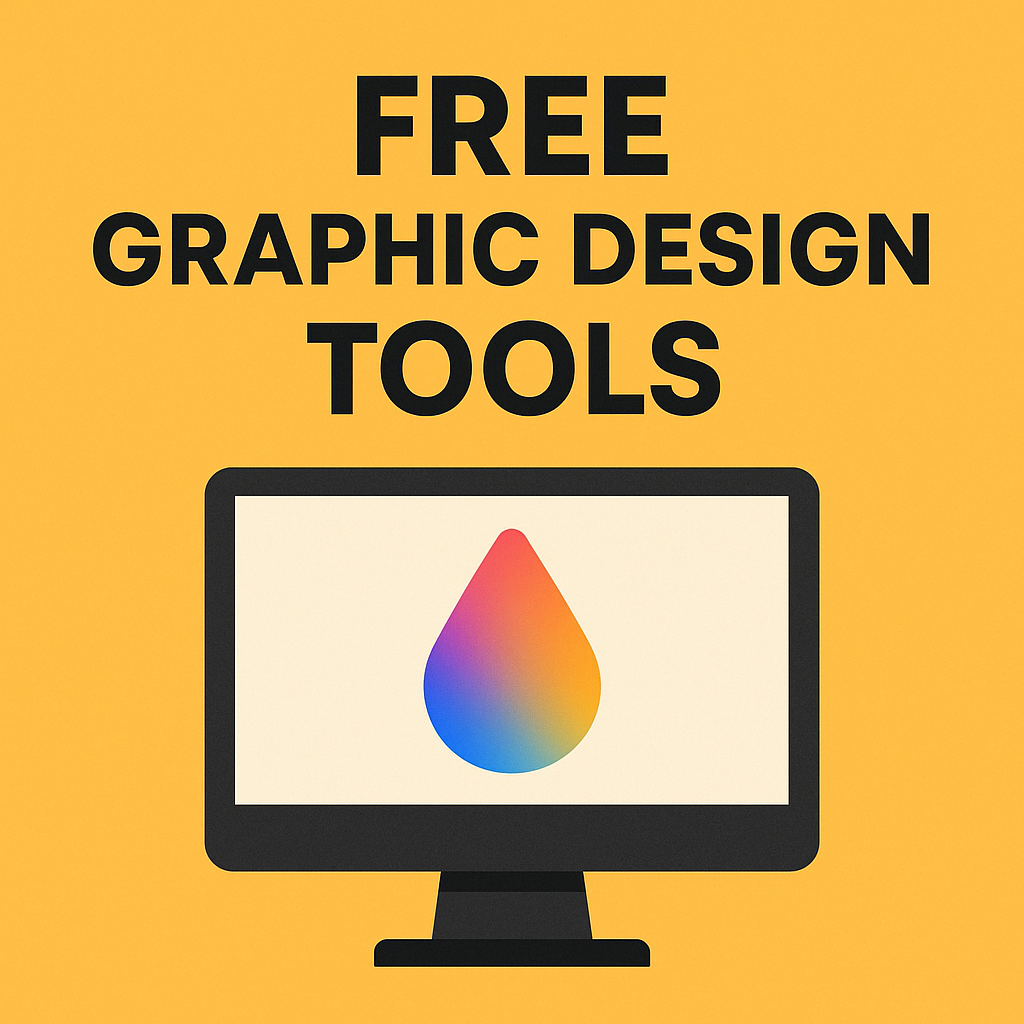
Graphic design doesn’t have to drain your wallet — in fact, some of the most powerful free graphic design tools are absolutely free. Whether you’re just starting out or you’re a seasoned creative looking for extra resources, these tools can help you craft stunning visuals without spending a cent. They provide the flexibility, versatility, and professional-grade features needed to bring your ideas to life. Let’s dive deeper into the top five tools that can transform your creative workflow and help you produce high-quality results on any budget.
1. Canva
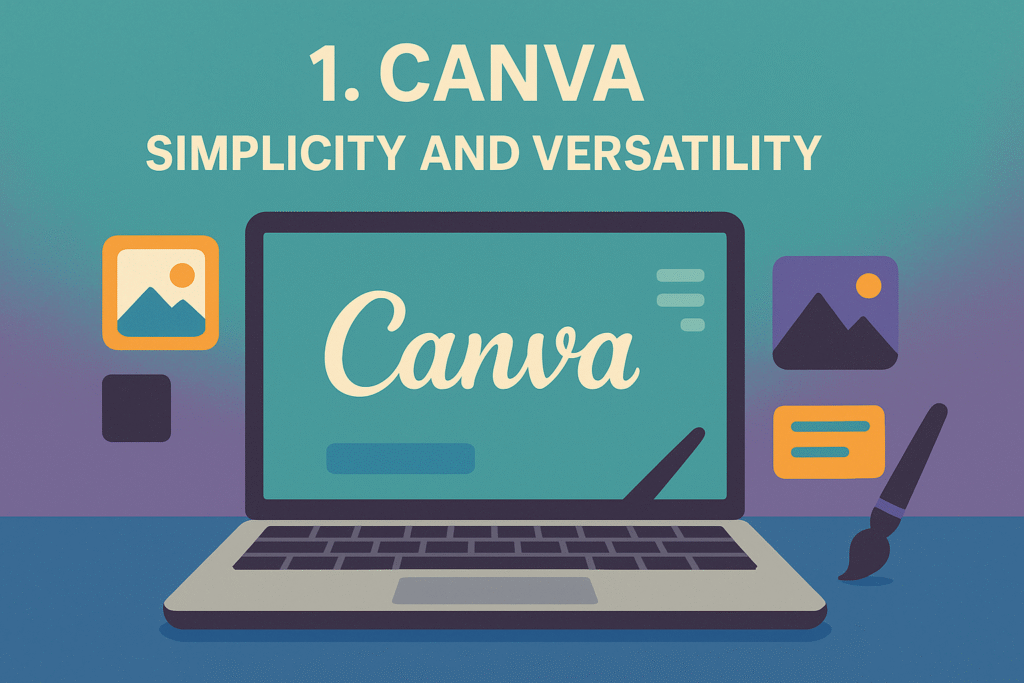
If simplicity and versatility are what you’re after, Canva is your best friend. This drag-and-drop design platform is incredibly beginner-friendly, yet powerful enough for experienced designers. It offers a massive library of templates for everything from Instagram posts and YouTube thumbnails to presentations and business cards. With its intuitive interface, you can create polished designs in minutes without struggling with complex menus.
Even better, Canva’s free plan includes access to thousands of elements, fonts, and images, making it an all-in-one solution for quick projects or ongoing content creation. It’s especially valuable for social media managers, small business owners, and freelancers looking to maintain a professional brand presence without outsourcing design work.
2. Figma
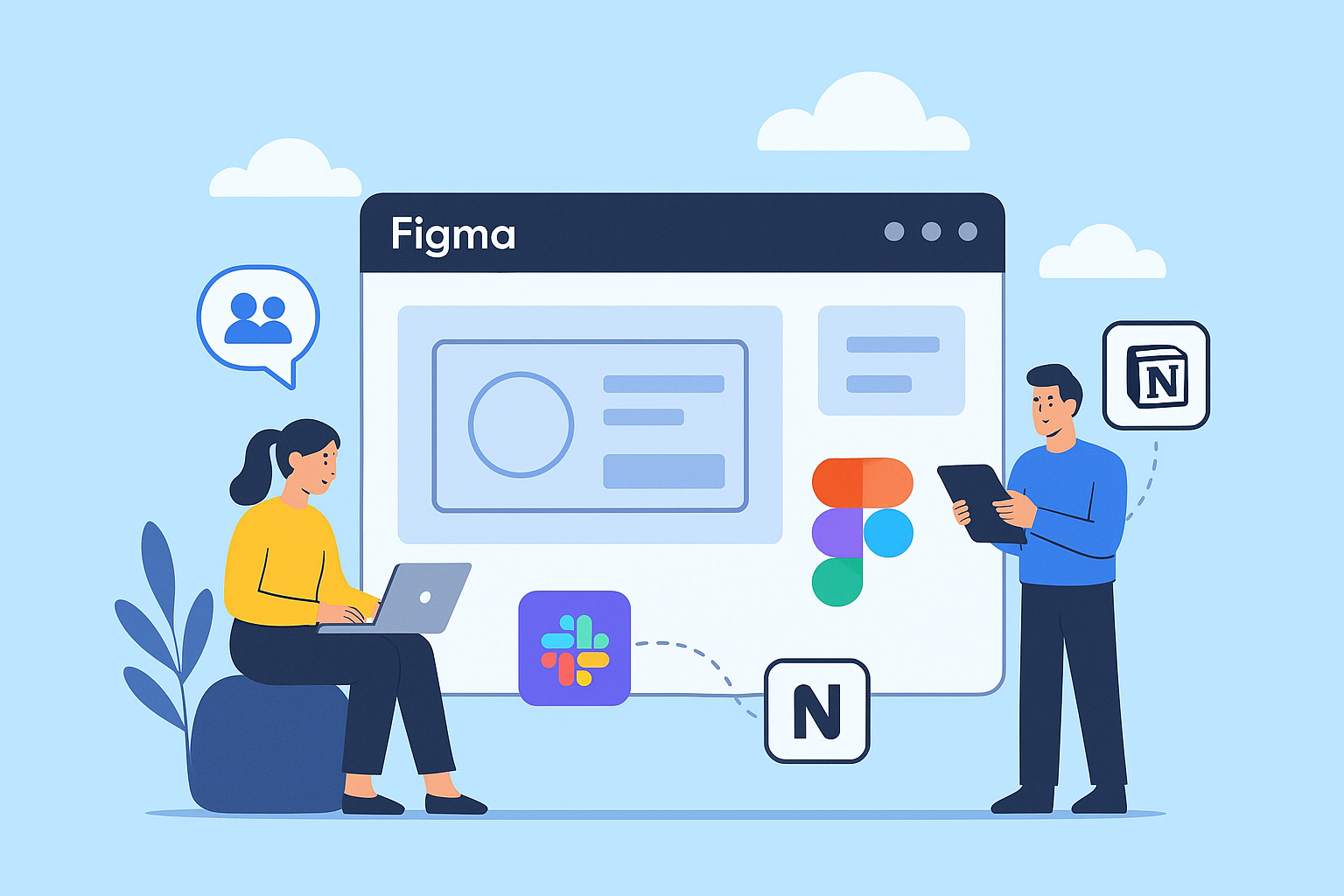
Perfect for UI/UX design, Figma’s cloud-based platform enables real-time collaboration that’s hard to beat. It’s particularly popular with web designers, developers, and product teams who need to work together seamlessly. You can design interfaces, create interactive prototypes, and share them instantly with clients or teammates all in your browser.
The free version is surprisingly generous, offering unlimited files and collaborative features that make teamwork simple and efficient. Its ability to integrate with tools like Slack and Notion adds even more value, streamlining the entire design-to-development process.
3. GIMP
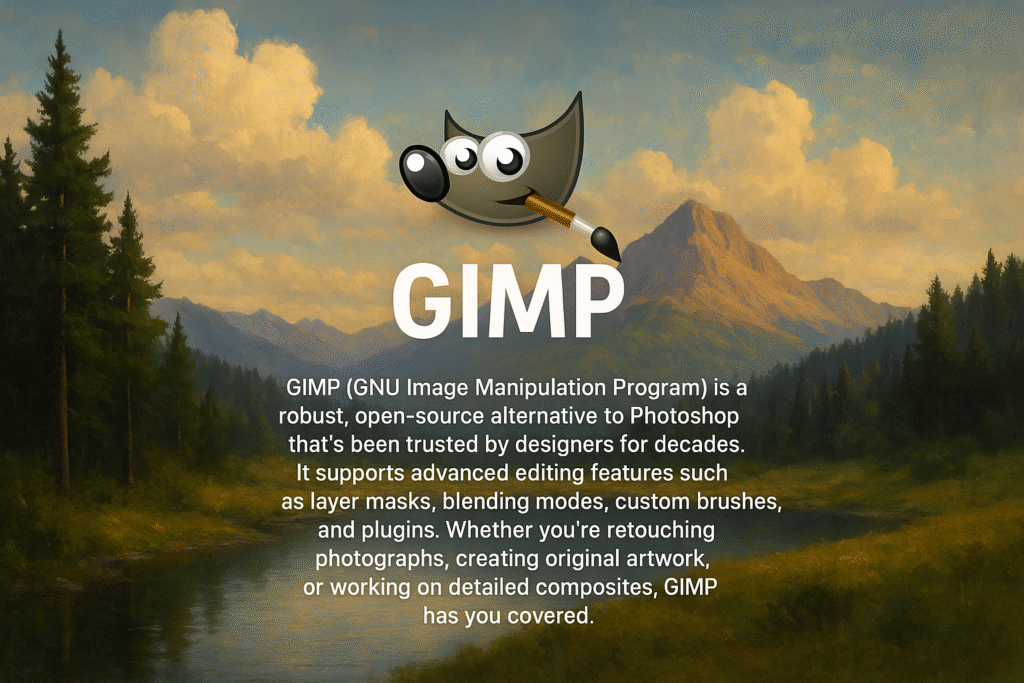
GIMP (GNU Image Manipulation Program) is a robust, open-source alternative to Photoshop that’s been trusted by designers for decades. It supports advanced editing features such as layer masks, blending modes, custom brushes, and plugins. Whether you’re retouching photographs, creating original artwork, or working on detailed composites, GIMP has you covered.
Its active community continuously develops new tools and tutorials, making it a great long-term choice for anyone who wants complete control over their creative process without paying for expensive software licenses.
4. Inkscape
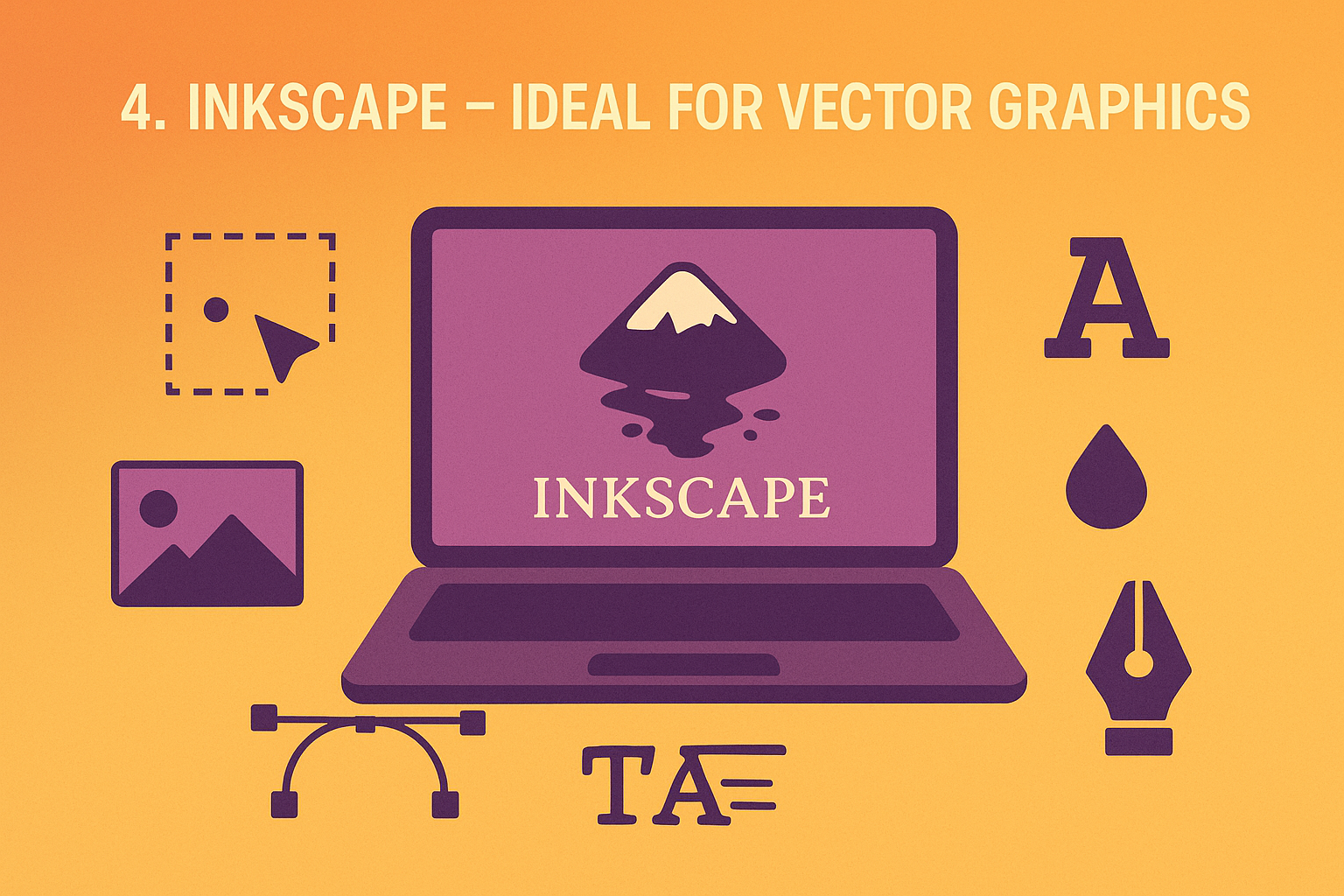
If vector graphics are your specialty, Inkscape delivers everything you need and more. It’s ideal for creating logos, icons, infographics, and scalable illustrations. With features comparable to Adobe Illustrator, Inkscape supports advanced path tools, node editing, and text manipulation — all without costing a penny.
It’s perfect for branding projects or any work where scalability and precision are crucial. Best of all, it’s cross-platform, so you can use it on Windows, macOS, or Linux without worrying about compatibility issues.
5. Krita
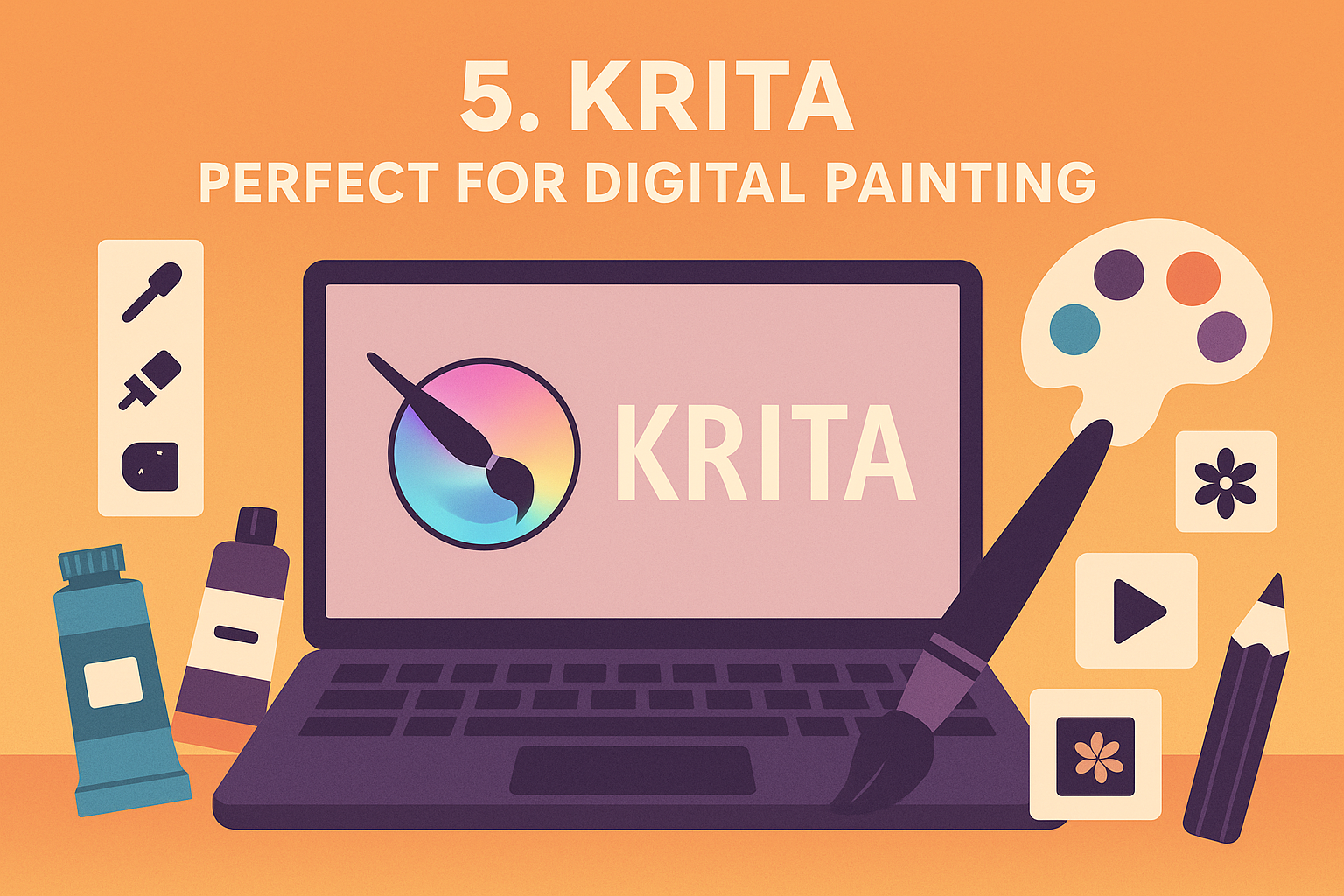
Krita is a dream for illustrators, concept artists, and digital painters. Its brush engine is incredibly responsive, offering hundreds of brush presets that feel natural and intuitive. The interface is customizable, allowing artists to set up their workspace exactly how they like it.
From creating concept art and storyboards to detailed illustrations and comics, Krita is built with artists in mind. It also supports vector layers and animation, making it one of the most versatile free creative tools available.
Final Thoughts
With these free graphic design tools, you can unleash your creativity without worrying about subscription fees. Each one offers unique strengths, so explore them all and see which fits your style best. They not only save you money but also give you the flexibility to experiment and grow as a designer.
If you wanna know the graphic design principles check this out Graphic Design Principles: 10 Essentials for Beginners.
